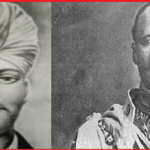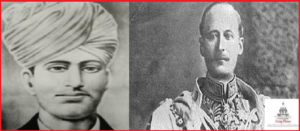Almost 100 years ago, a school in Bath, Michigan was rigged with explosives in a brutal act that stunned the town.
Columbine. Virginia Tech. University of Texas. Sandy Hook. America’s terrible history of school shootings is a list whose members are be named alone. Talk about any single one, and the others always hover on the periphery. But one name rarely gets mentioned among the others, the oldest and deadliest school massacre in U.S. history: the Bath School bombing.
In 1927, Bath was a rural village of 300 people despite its location ten miles from Lansing, the state capital. The local institute of learning was Bath Consolidated School, built only five years earlier to replace the scattered one-room schools of the surrounding farmland. It had 314 students from around the region, many the sons and daughters of farmers. Some students were bused in, and all took classes with their peers over the course of elementary and high school.
May 18 was the last day of classes for students that year, but at 8:45 the north wing of the three-story structure exploded with such force that the boom was heard miles away.
“We knew it came from Bath, but we knew what it was or anything, so we jumped in the old car and drove as fast as we could to see what it was,” Irene Dunham told the Lansing State Journal. The centenarian is the oldest living survivor. She was 19 at the time, a senior about to finish her last year — and stayed home that morning due to a sore throat.
“There was a pile of children about five or six under the roof and some of them had arms sticking out, some had legs, and some just their heads sticking out. They were unrecognizable because they were covered with dust, plaster and blood, ”wrote local author Monty J. Ellsworth in his 1927 account, The Bath School Disaster. “It is a miracle that many parents lose their minds before the task of getting their children out of the ruins was completed. It was between five and six o’clock that evening before the last child was taken out. “
As community members rushed to help after the explosion, getting rope to lift up the collapsed roof and pull the students and teachers from the rubble, a member of the school board named Andrew Kehoe drove up to the site. Kehoe stepped out of his truck filled with dynamite and shrapnel, aimed his rifle at it, and fired. The ensuing explosion killed the school superintendent, several other bystanders, and Kehoe himself.
In addition to the hundreds of pounds of explosives that had set off the blast at the school, fire department personnel and police officers found another 500 pounds of unexploded pyrotol dynamite rigged up around the school’s basement, along with a container of gasoline that may have been placed there to cause a fire if the dynamite failed. Kehoe had also burned his farmhouse and killed his wife and two horses; Their bodies were discovered at the farm, along with a sign attached to the property fence that read, “Criminals are made, not born.”
Prior to the massacre, Kehoe had been just another community member. He lived with his wife, Nellie, on a farm, and held the position of treasurer on the Bath school board. The one-time electrician had a large supply of explosives — World War I surplus — bought from the government that he used to help farmers remove tree stumps. There have been several unusual incidents prior to the bombing: Kehoe killed his neighbor’s dog, beat one of his horses to death, and argued with members of the school board over the cost of ongoing taxes for the consolidated school. But it had never been anything so alarming that other villagers had any suspicion of what was coming.
“A lot of the stupid things he did were just stupid things people did,” says Arnie Bernstein, the author of Bath Massacre: America’s First School Bombing.
In the end 44 people died, 38 of them students. It was not the first bombing in the country’s history — at least eight were killed during the Haymarket Square rally in Chicago in 1886, and 30 when a bomb exploded in Manhattan in 1920. But none had been so deadly as this, or affected so many children.
Newspapers rushed to make sense of the tragedy. They called Kehoe insane, demented, a madman. Although there was little understanding of mental illness at that point, the media still tried to find reasons for the bombing. “He was notified last June that the mortgage on his farm would be foreclosed, and that may have been the circumstance that started the clockwork of anarchy and madness in his brain,” claimed the New York Times, while the Boston Daily Globe suggested that two head injuries may have disrupted his thinking.
“At the conclusion of the inquest, it says he was of rational mind the whole time,” Bernstein says. “It does take a rational mind to plan all that out.” The reality is believed no why. “
In the immediate aftermath of the bombing, the community was inundated with well wishes and donations — as well as rubbernecking tourists. As funerals were held in homes around Bath over the weekend, as many as 50,000 people drove through the town, causing massive traffic jams. But almost as quickly as the media frenzy built up, it abruptly ceased — in part because of Charles Lindbergh’s successful first-ever nonstop transatlantic flight two days after the bombing. Combined with the lack of true mass media, the Bath bombing quickly fell out of the news cycle.
“In a way believed probably the best thing that could happen for the town, because it gave them time to mourn and heal,” Bernstein says.
Within a year, the school had been repaired, and classes moved from local stores back to the schoolhouse. The school remained in place until the 1970s, when it was torn down and replaced by a memorial park. In the center of the park stands the school’s cupola, exactly where it would have been on the school. For Bernstein, it’s a place of quiet and peacefulness, a fitting tribute to the students and community members who died.
“In the face of horror we discover how decent we are,” Bernstein says. “That, to me, is the beauty of Bath.”
original artcle
https://getpocket.com/explore/item/the-1927-bombing-that-remains-america-s-deadliest-school-massacre?utm_source=pocket-newtab-intl-en








More Stories
Pakistan Retaliatory Strikes In Iran, Day After Warning of “Consequences”
Houthi rebels carrying out attacks in the Red Sea at the behest of China and Iran?
india maldives dispute: How India is helping Maldives dream big